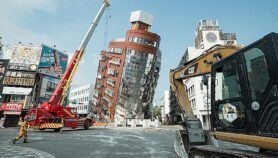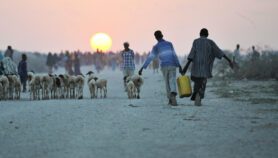By: Ashfaq Yusufzai
Send to a friend
The details you provide on this page will not be used to send unsolicited email, and will not be sold to a 3rd party. See privacy policy.
[PESHAWAR] A straw house designed to withstand strong tremors during earthquakes could provide robust protection, engineers have found.
The 4.3 by 4.3 metres building, made largely of bales of straw, clay and gravel, was first designed in 2006 by the US-based University of Nevada in collaboration with the not-for-profit organisation Pakistan Straw Bale and Appropriate Building (PAKSBAB) based in Islamabad, and small improvements have been added since then.
A series of computer-based tests that mimicked the shaking force of a range of earthquake intensities showed that the houses with the new design do not collapse.
The tests, carried out at the University of Nevada's Large-Scale Structures Laboratory, subjected the houses to 200 per cent more shaking than was experienced during the Northridge, California, earthquake in 1994 when instruments measured the largest ground acceleration — how hard the earth shakes in a given area — in the world.
The house can withstand shaking because of its "sandwich construction" — a straw bale wall and plaster skins with fishing net reinforcement —that reduces the intensity of earthquake-induced shaking, says Darcey Donovan, founder and chief executive officer of PAKSBAB. "Although severely damaged, the building did not appear in danger of collapse, even at the end of the test sequence."
The building method uses straw bales that rest on a foundation of gravel encased in clay cement; the walls are made of bamboo. The roof is made of wood with an additional straw layer for insulation, covered with metal. Other straw bale designs use the bales for insulation rather than as structural and load-bearing components.
PAKSBAB has so far built nine of these houses in Mansehra, one of the worst-hit districts in the October 2005 earthquake that hit northern Pakistan. The earthquake measured 7.6 on the Richter scale, killed 73,000 people and left three million homeless (see 'After the quake: Pakistan upgrades seismic network').
"The construction method has received an enthusiastic reception in Pakistan's North-West Frontier Province due to its excellent earthquake and fire resistance … and use of local materials and labour," Donovan told SciDev.Net.
PAKSBAB is now building two more houses in Mansehra, and its plans include a training course with local partners, building more houses for poor families, and working in other earthquake-prone countries.
Local people appear satisfied with the new design. "We are in the house. It's excellent. It can accommodate our five-member family," says Raz Shah, a Pakistani earthquake survivor.













